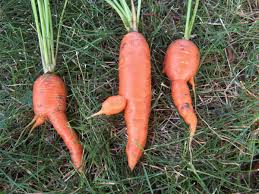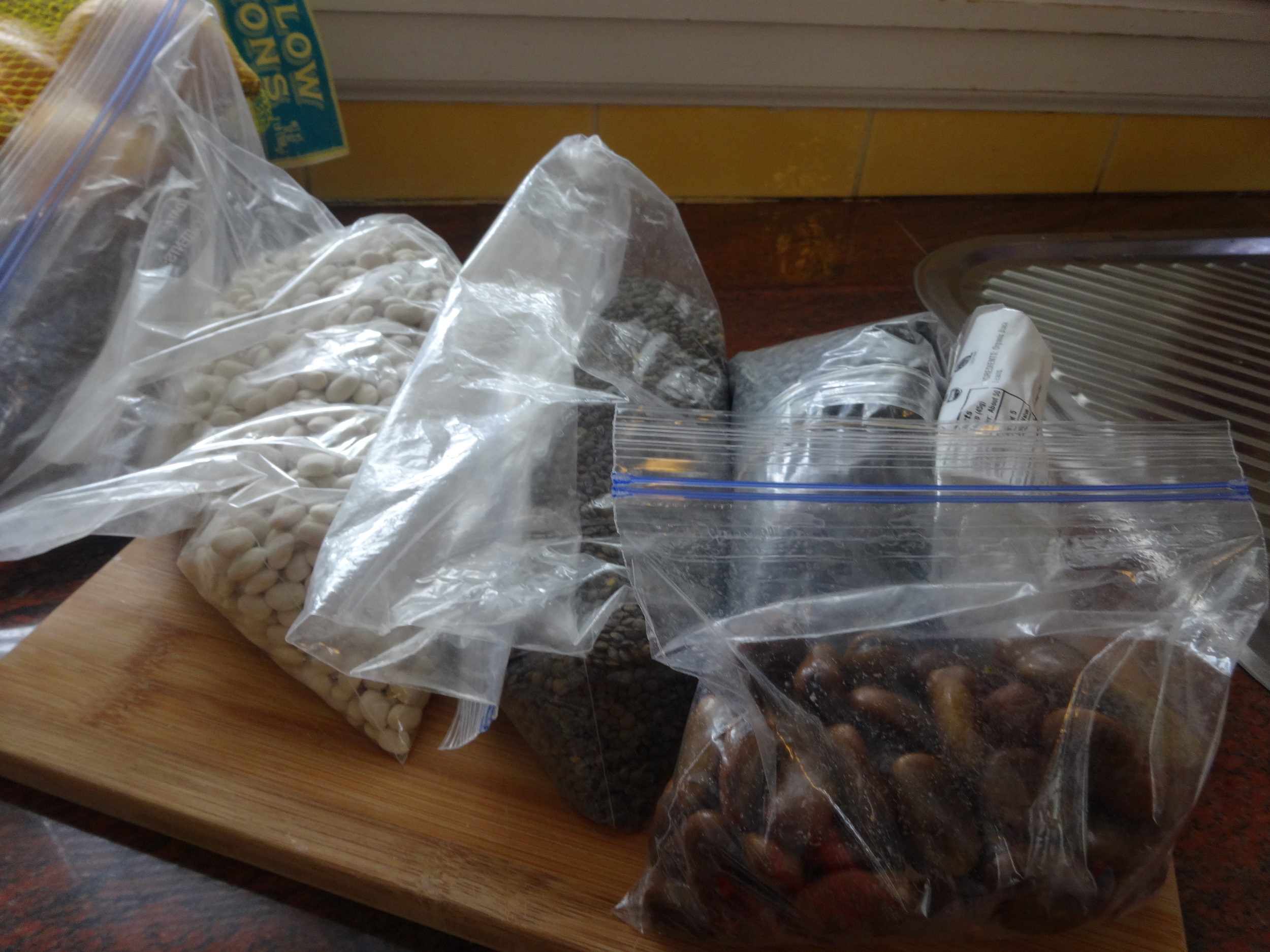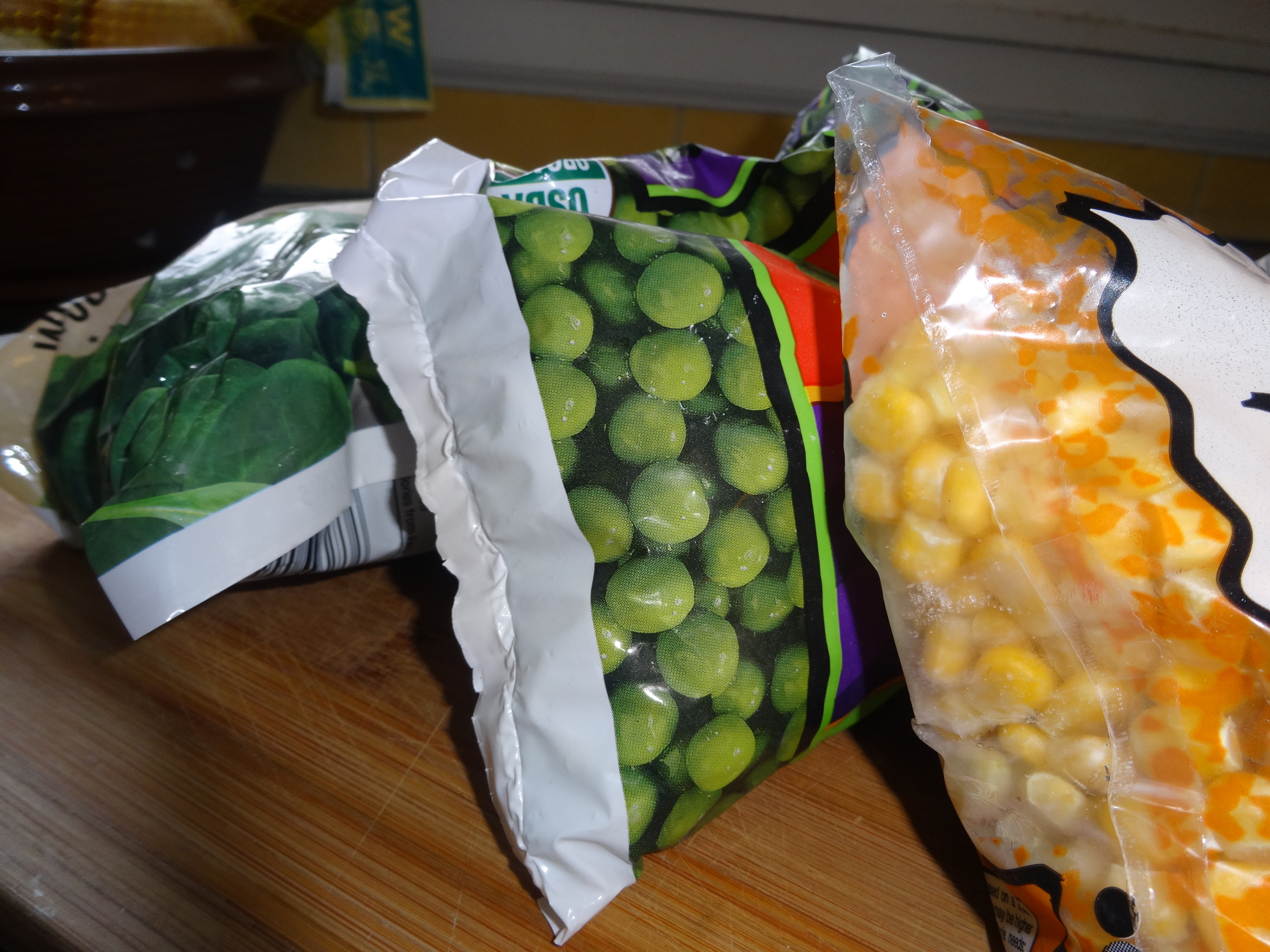 Fast Food is nothing new apparently. When I recently unpacked my cookbooks I found a slim little French cookbook from 1930 (!!!) that I had forgotten all about. It's called La Cuisine en 10 Minutes, roughly translated as 10-Minute Recipes, and was written by 10-minute Maestro (as the Guardian called him) Edouard de Pomiane. This book proves that you can cook and eat well on a busy schedule during the week without having to toil in the kitchen for hours.
10-minute meat or fish - I have become a 10-minute master at sautéing some meat or fish quickly in butter and olive oil (cod, sole, shrimp, calf liver, thin pork chops, chicken strips), then deglazing the bits on the bottom with whatever you have around - more butter, wine (white is good with fish, add some capers), cream (add some mustard), other liquor (brandy, sherry, even vinegar), broth - the whole thing takes minutes and tastes very French. Instead of serving the sauce over the meat you can also throw your cooked/steamed vegetables (corn, greens, cauliflower, whatever you have on hand - frozen is ok, leftovers are ok) into the deglazed sauce - et voilà, tasty vegetables.
Fast Food is nothing new apparently. When I recently unpacked my cookbooks I found a slim little French cookbook from 1930 (!!!) that I had forgotten all about. It's called La Cuisine en 10 Minutes, roughly translated as 10-Minute Recipes, and was written by 10-minute Maestro (as the Guardian called him) Edouard de Pomiane. This book proves that you can cook and eat well on a busy schedule during the week without having to toil in the kitchen for hours.
10-minute meat or fish - I have become a 10-minute master at sautéing some meat or fish quickly in butter and olive oil (cod, sole, shrimp, calf liver, thin pork chops, chicken strips), then deglazing the bits on the bottom with whatever you have around - more butter, wine (white is good with fish, add some capers), cream (add some mustard), other liquor (brandy, sherry, even vinegar), broth - the whole thing takes minutes and tastes very French. Instead of serving the sauce over the meat you can also throw your cooked/steamed vegetables (corn, greens, cauliflower, whatever you have on hand - frozen is ok, leftovers are ok) into the deglazed sauce - et voilà, tasty vegetables.
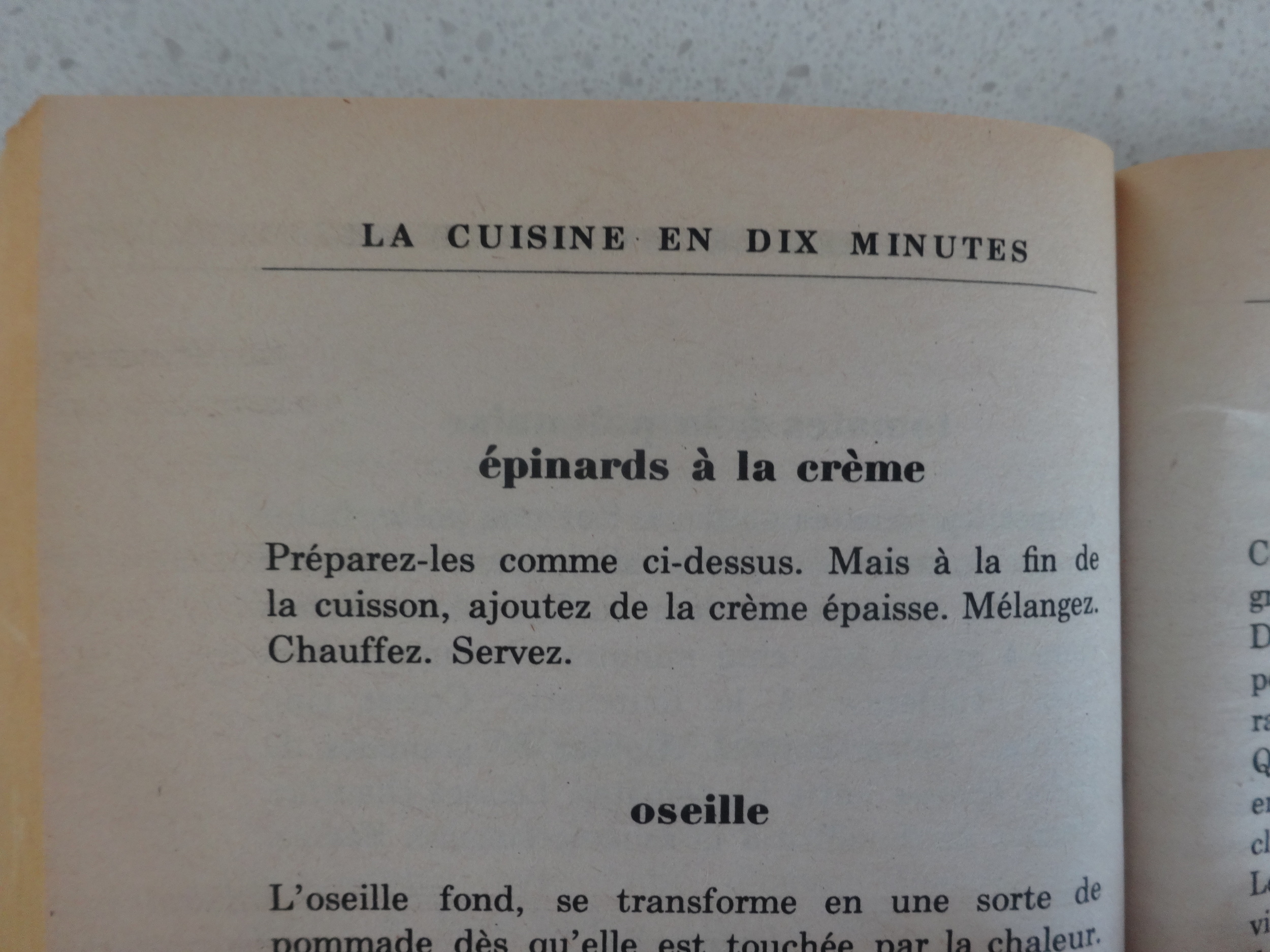 10-minute spinach - épinards à la créme - melt butter in a saucepan, add frozen spinach right out of the package (unless you have had time to take it out in the morning), heat up, add cream (sour, heavy) or more butter, season.
10-minute spinach - épinards à la créme - melt butter in a saucepan, add frozen spinach right out of the package (unless you have had time to take it out in the morning), heat up, add cream (sour, heavy) or more butter, season.
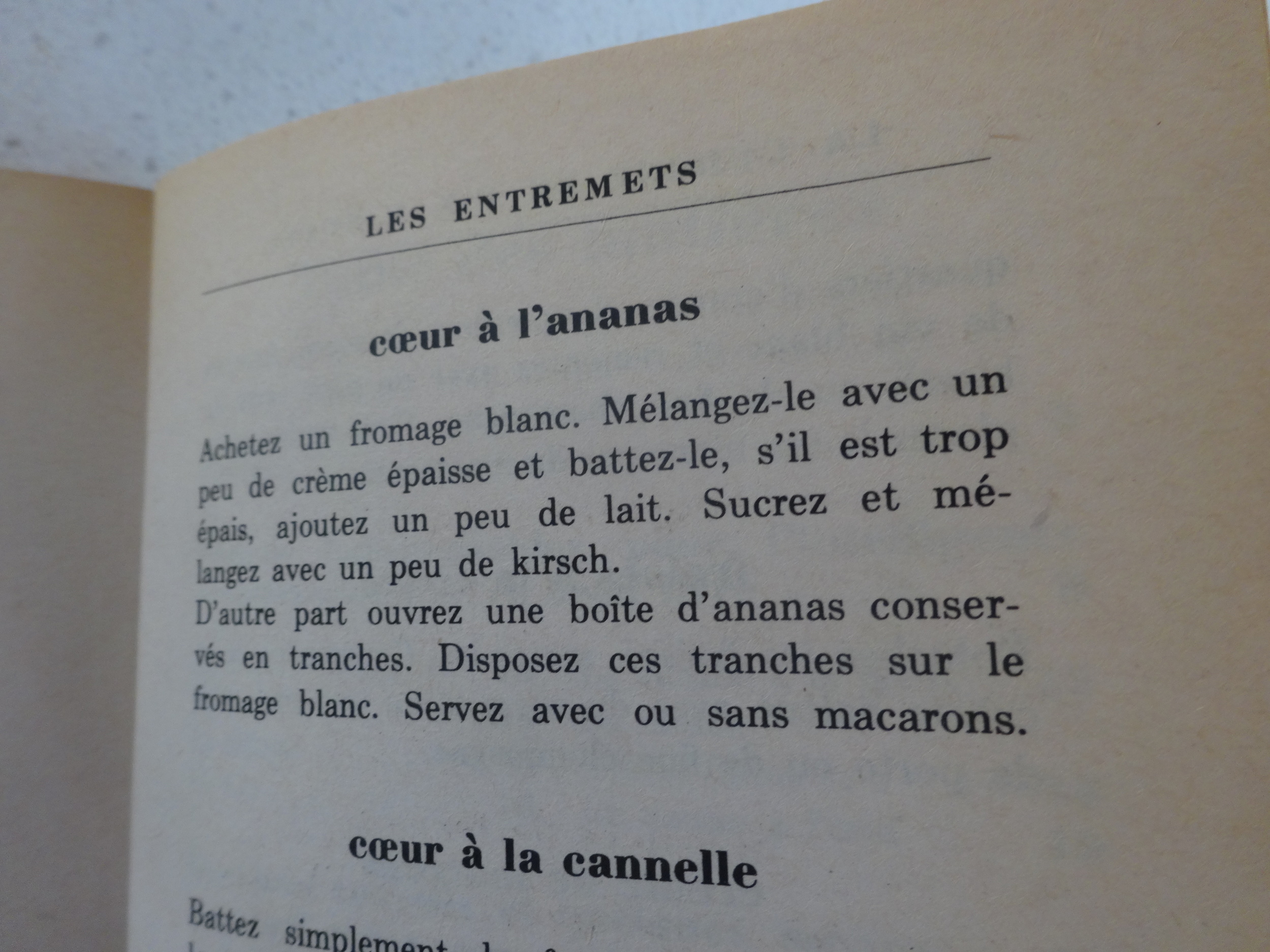 5-minute dessert - coeur à l'ananas - mix some farmer's cheese or Greek yogurt (whole milk, please) with some cream or mascarpone, add sugar and some clear kirsch brandy (the French touch that makes the difference), pineapple pieces (fresh or canned, whatever you have), and a cookie.
5-minute dessert - coeur à l'ananas - mix some farmer's cheese or Greek yogurt (whole milk, please) with some cream or mascarpone, add sugar and some clear kirsch brandy (the French touch that makes the difference), pineapple pieces (fresh or canned, whatever you have), and a cookie.
Start out with some saucisson sec, some nuts and a glass of wine, and there is your 3-course meal prepared in 20-25 minutes.
As luck would have it the book is available in an English translation. It may be the best $8.97 you'll ever spend. Bon appétit!







